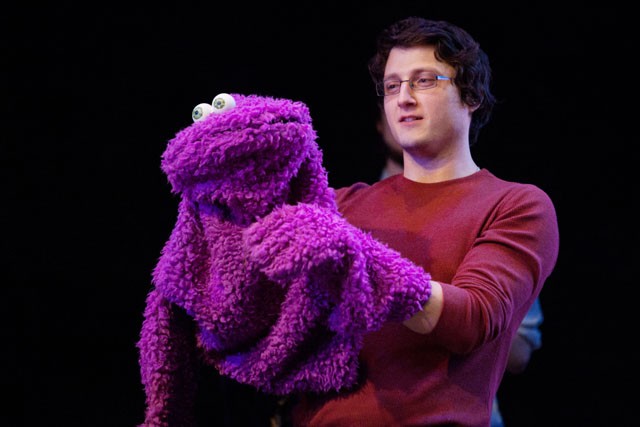WHAT:âÄúBallsâÄù open mic cabaret
WHERE: Southern Theater
WHEN: Sat. midnight
COST: $5
A guitarist, a mime, and a slam poet walk into a theater. What might sound like the beginning of an old joke is actually an average night at âÄúBalls,âÄù the Southern Theater’s weekly cabaret. The event is a pointedly drug- and alcohol-free affair which features a dozen performers of various ages and skill levels from across the disciplines, a showcase of talents in five-minute bursts for an hour and a half. The cabaret espouses namesake creator Leslie BallâÄôs dogma of âÄúradical hospitality.âÄù This occasionally overbearing supportiveness in tandem with a policy of no censorship or screening can sometimes manifest itself in the lack of a curatorial voice, a combination that often results in unprepared performances and a potential detriment to the audience experience.
Since its inception in 1991, however, âÄúBallsâÄù has played host to singers, dancers, poets, puppeteers, roller-skaters, stilt-walkers, improv acts, slapstick, strip-teases and what Ball described as a âÄúmind-openingâÄù juggling act. âÄúBallsâÄù has also served as a place where Minnesota natives and comedians Nick Swardson and Maria Bamford cut their teeth, though Bamford’s first show was a violin performance before she went on to craft her signature autobiographical material.
âÄúIt’d be easier to say what we haven’t had,âÄù Ball said. âÄúWe had one fellow who would pick someone out of the audience and interview them as if this was the last day of their lives.âÄù
The notion of a cabaret calls a quaint vaudevillian revue to mind, but in an evening suited to novices, acts are likely to be less rehearsed and polished.
Ball makes clear âÄúwe don’t screen or censor,âÄù adding, âÄúyou may be offended.âÄù This disclaimer may lead a viewer to assume that a particularly raunchy performance will disagree with their delicate sensibilities, but instead the offense may be provoked by inattention to form rather than shocking content.
One performer at the cabaret has made a habit of regularly using crass language to air his litany of grievances. His ongoing monologue has since evolved into a diagnosis of his own mental health. This expansion upon conventional performance contributes to what Ball calls âÄúblurring the line,âÄù which the cabaret really committed to.
The line âÄî or one of the lines âÄî Ball looks to blur is the one between the performers and the audience. Her goal is to include spectators in the artistic process. âÄúThe community is a collaborative community. We’re all co-creating,âÄù she said.
The rapport between audience and stage, however, can sometimes take on the character of being in a living room with tiered seating; the conversation somewhat one-sided and occasionally not so stimulating.
A typical evening at âÄúBallsâÄù begins with a ritual gathering of audience and performers to be collectively ushered into the theater by none other than hostess Ball. The show can only begin, however, after everyone involved in the experience is gathered for the consummate group photo. Through the night, people emerge from their seats within the audience to take the stage. One such performer, who goes by the name of Reverend Pat D., is an individual with Asperger’s whose act often consists of just talking ad lib. He has frequented âÄúBallsâÄù since 2000 as a place where D. said he can âÄúshare [his] ideas with the world.âÄù Naval officer and mime Kirsten Stephens views the cabaret as a place to work on and refine new material.
However, in the name of variety, inclusiveness and free expression, the stage environment at âÄúBallsâÄù can often become unhinged, informal and even awkward. When anything goes, sometimes nothing can happen. The audience becomes more of a support group to help a performer through their efforts to express themselves rather than a body of critical spectators. As an event tailored for amateur performers, âÄúBallsâÄù can sometimes fall short of its titular innuendo that may lure audiences to it in the first place.








